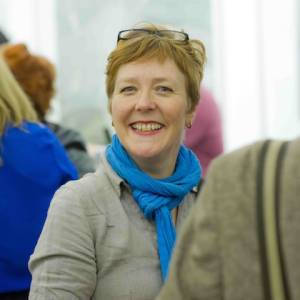Jessie Heads for Glass Case @KelvingroveArt
A suitably sepia-like snapshot of staff from Glasgow Museums installing the wedding dress of one Jessie Morrison Inglis into its temporary glass case at Kelvingrove Art Gallery in Glasgow.
I took it when I was at Kelvingrove to review a new exhibition called A Century of Style: Costume and Colour 1800-1899 which appeared in The Herald on Saturday past. Review follows on...
IT'S BEEN 23 years since Kelvingrove hosted Dancing through Time, the last major exhibition to cherry-pick from Glasgow Museums 15,000 piece-strong collection of clothing and related accessories. More recently, in 2007, the Kylie Minogue exhibition, featuring the diminutive Australian pop princess’s stage costumes and accessories, proved to be one of the most popular exhibitions Kelvingrove has ever presented.
The new star of Kelvingrove’s latest fashion show is similarly tiny and, as her wedding dress reveals, she loved fine design as much as the next 19th century Glaswegian.
Jessie Morrison Inglis’ ivory wedding dress is a highlight of A Century of Style: Costume and Colour 1800-1899. Designed and hand-stitched by one Miss Armour of 355 Bath Street, it sums up the creative energy – and wealth – which pulsed through the so-called Second City of the Empire at the time.
Jessie Inglis was a tiny wee lady who, following her wedding to Rev John Baird of Helensburgh, gave birth to four strapping boys; the youngest of whom was John Logie Baird, inventor of television.
Mrs Baird could never have imagined when she walked down the aisle on 18 March 1878 that her princess-line cream silk grosgrain wedding dress would end up in a glass case in a museum. But that is where you will find it, alongside a dazzling array of over 40 costumes, as well as related accessories and paintings.
I predict this show will become another star turn for Kelvingrove. As well as being beautifully presented, it offers a swish mixter-maxter of social history meets catwalk fashion show.
Key inventions such as the sewing machine, aniline dyes and paper patterns came into being in the 19th century. This exhibition brings all these things into the frame, while highlighting the fact fashions and fabrics varied according to income.
Curator Rebecca Quinton has arranged the exhibition thematically by colour and there’s a cool theatricality to the presentation, with many of the outfits displayed on mannequins atop raised white ‘stages’. To the rear, large antique mirrors allow visitors to view to see the costumes from all angles. Underneath the plinths, colourways are echoed by matching LED colour.
Displaying rarely seen and meticulously conserved examples of womenswear, menswear and children’s clothing, fittingly it starts off with the very Glaswegian colour of ‘dreich’.
This, says Quinton, is a deliberate nod to the fact Glaswegians – as well as being style-conscious – had to be practical and keep their clothes dry and clean.
One of the highlights of this section is Whistler’s magnificent oil painting; Arrangement in Grey and Black No. 2: Portrait of Thomas Carlyle. Beside it, sits the famous Victorian literary lion’s actual hat which was given to a neighbour following his death and which found its way into Glasgow Museums’ collection.
The exhibition then moves from various shades of grey to a veritable rainbow of lushly colourful ensembles which are artworks in their own right.
Glasgow was always on trend and this exhibition proves it. With bells on.
A Century of Style: Costume and Colour 1800-1899, Kelvingrove Art Gallery & Museum, Argyle Street, Glasgow, G3 8AG, 0141 276 9599; www.glasgowlife.org.uk
Until 14 February 2016 (Tickets: £5/£3)
- 3
- 1

Comments
Sign in or get an account to comment.


